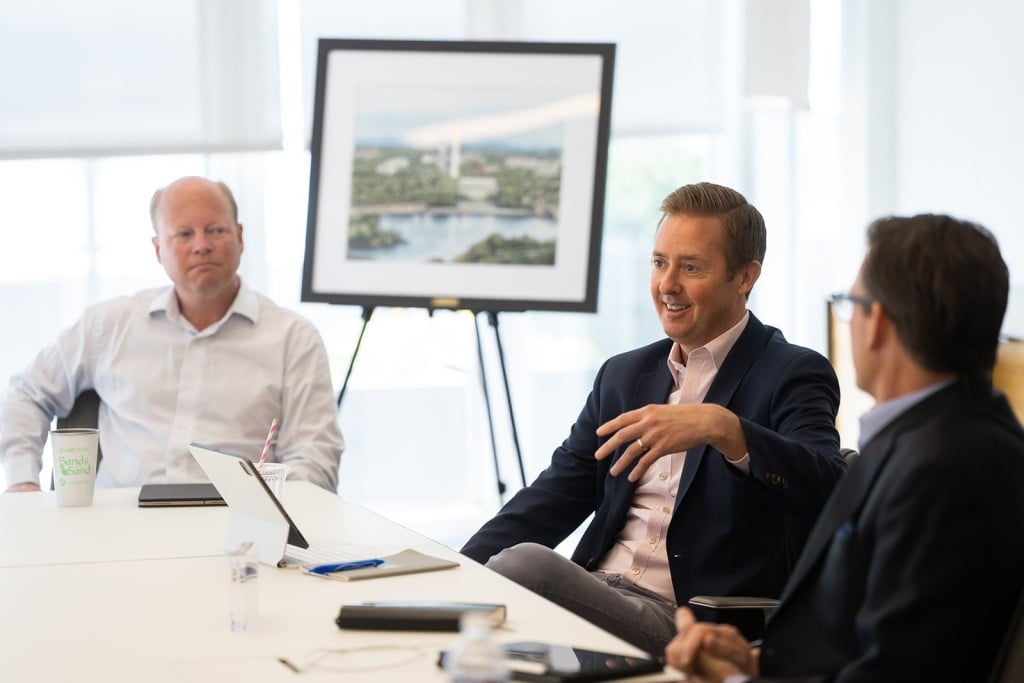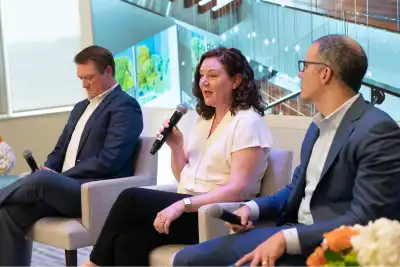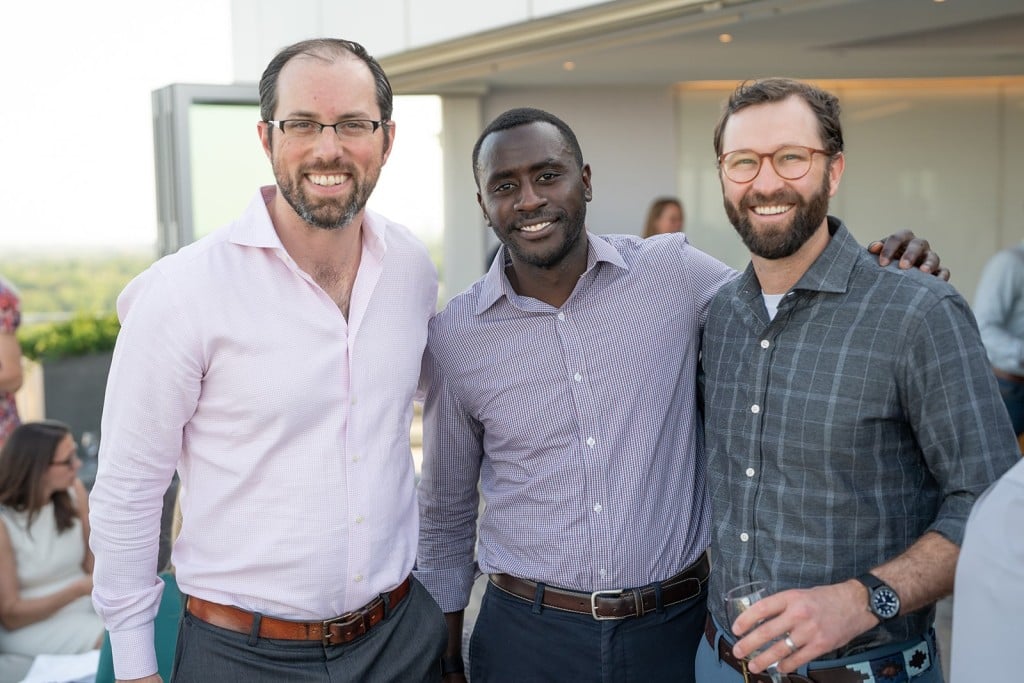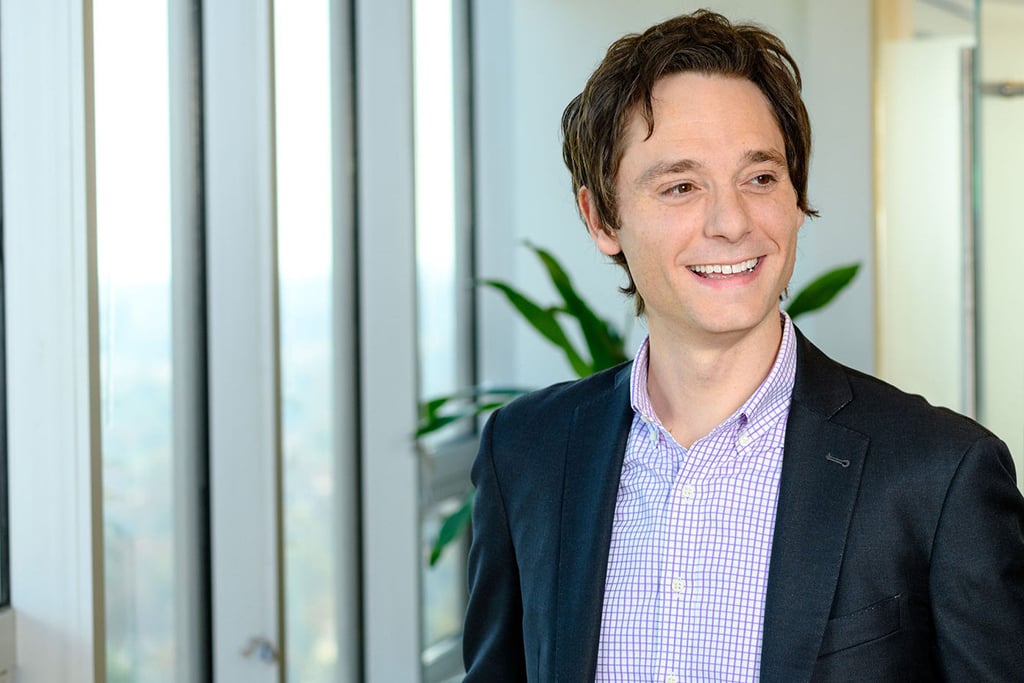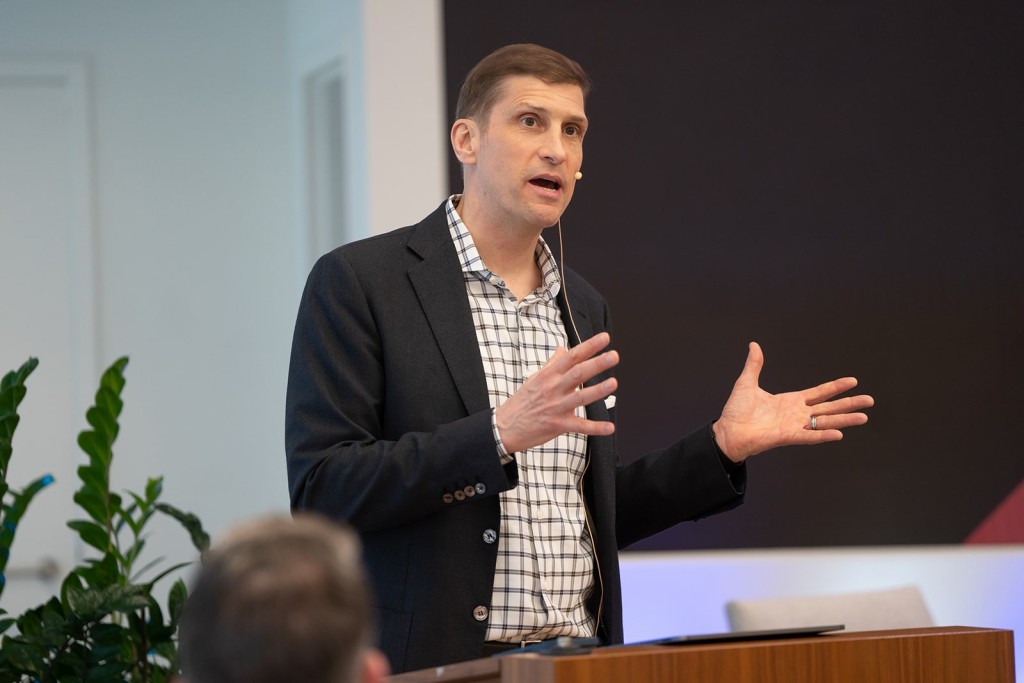Related Articles
We are in the early stages of the most significant paradigm shift of our lifetime. Listen to Sands Capital Sr. Portfolio Manager Thomas Trentman, CFA, discuss the opportunities generative AI has created and where it could take us in decades to come.
Transcript
Kevin Murphy: Hi, I’m Kevin Murphy, senior director of client relations. And joining me today is my friend and colleague Thomas Trentman, CFA, co-portfolio manager on our Select Growth strategy and our Technology Innovators strategy and a longtime technology analyst here at Sands Capital. Tom is joining me today for a conversation about AI [artificial intelligence], one of the emerging secular trends that we’ve been investing in for a while now.
Tom, you know, we’re more than a year into what has been described as the most significant paradigm shift in our lifetime. It’s a significant technology transformation that defines a lot of the innovation that’s happening all around us. Can you take us through, from your perspective, where it started and where we are today?
Thomas Trentman: Yes, I mean AI is really—It was the launch of [OpenAI’s] ChatGPT that really captured the imagination. And that was really because it was the first time people would interact with a computer that felt like interacting with a human, as opposed to telling a computer exactly what to do and waiting for the results. And so the imagination around where it could take us and how powerful would this sort of thinking and judgment by computers be is really what’s driving this.
We’ve seen a lot of paradigm shifts at Sands Capital over the years, and we’ve got a framework for evaluating them. And there are three phases to what we expect to happen. And then not perfectly sequentially but roughly.
And so the first thing is you’ve got to build the infrastructure. You can’t take advantage of the new paradigm if you don’t have the new components that really drive it. So this time around, it’s NVIDIA we think of as the architectural engine of it. But [also] all of the semiconductors and semiconductor supply chain that really feed into these massive compute systems that can run these algorithms.
After you get that original infrastructure, the infrastructure will keep getting better. So you might not be buying as many units or more units, but you’re certainly buying more capable units. And the companies that can add technology and make those units better will continue to win.
And then, ultimately, you’re going to use this technology to do something, and it takes a while to build those use cases. We see two aspects of this. The first is old use cases. They can go to the new use cases. You can think of this as being like desktop to mobile and all the things you do on a desktop—and now you can do on a mobile phone.
And then there can be totally new use cases that didn’t exist before, so you wouldn’t have ordered an Uber on your desktop, but it becomes a daily part of life once everyone’s got a smartphone and they’re highly capable.
So as I said, we’re only about a year into the capturing of the imagination. So while this has been worked on for many years, and some of these algorithms are 50-plus years old, it was really then that the massive investment started to take advantage of this technology.
And it changes fast. And it’s always exciting news stories. And everyone’s asked me, where are you now? Well, the reality is we’re still in that infrastructure phase. I mean, we are still deploying the basic underpinnings in order to run these algorithms in order to advance the technology in order to create new use cases.

And, we’ve seen dramatic growth in much of the semiconductor world. NVIDIA is one particular example, but it’s far from over. There’s a long way to go in order to take advantage of this.
ChatGPT really took off based on [the large language model called] GPT-3. That was the engine they used. And now we’re on GPT-4, and GPT-4 uses about 100 times the compute capacity of GPT-1, which is only a few years old.
Looking forward—and again, based on what we’re deploying in the infrastructure phase—you can see a world in which the compute capacity being deployed might be that times again, so 100 times bigger than 100 times. That’s a lot of exponential change. It’s hard for us to envision as humans, but that’s what unlocks all these use cases that are going to be the DoorDashes or the Ubers of the AI world. And that’s really exciting. But again, they haven’t deployed that yet. They aren’t here yet. And so that’s why we’re in the infrastructure phase, and that’s why money is going to be spent on this infrastructure in order to produce these use cases.
Kevin Murphy: So even though we’re not quite there yet, are you seeing any emerging use cases on the horizon that wouldn’t have existed without AI or ChatGPT?
Thomas Trentman: You see a number of interesting use cases that are helping people do new things. There are some customer service chatbots. Coding is a big one where these models are really good at language. And coding is a very structured language. And so it’s helping engineers get more productive. And then you can see maybe not so monetizable but broadly spread use cases like cheating on your homework.
But when we look at big-dollar real economic use cases, digital advertising is the best example so far. So if we look at two of the largest companies in that space—Alphabet and Meta— they have a lot of the talent in AI. They’re on the very leading edge of the research efforts, and they put it in their advertising systems, and it’s driving results today.
So Alphabet’s Performance Max for the Google search engine and Meta’s Advantage+ for their social media advertising are driving revenues today. And it’s taking the power of AI. And Meta’s a particularly interesting example because it wasn’t too long ago that they looked like they were in trouble. Apple changed the privacy landscape, their revenue was suffering, their costs were rising. But now we’re actually seeing the other side of it.
The costs were rising largely because they were investing huge quantities in NVIDIA GPUs [graphics processing units]. And now they’re using it, and they’ve used it to fix some of the algorithms and figure out how to target the ads to make up for the loss of privacy. And now, it’s driving their revenues. And what’s also notable, I think, from the investment standpoint, is that really reinforces why one of our investment criteria is leadership.
Meta had the scale to invest all the billions of dollars in NVIDIA GPUs. They have the top-tier talent, and they have tons of data. And when you look at what they’ve been able to do relative to their peers, they’ve been able to accomplish a lot more, improve their targeting more, and their revenues grow much faster than some of the smaller peers that are having trouble keeping up.
So again, it really reiterates that, in these technology changes, leadership is very important to value creation. And that’s why we, in our concentrated portfolios, require companies to be leaders.
Kevin Murphy: Excellent. And I’m going to really have you put your futurist hat on here. We know that new technologies often beget newer technologies, things that we can’t even imagine yet today—what are your thoughts on that? What’s the true iPhone moment that will emerge from OpenAI?
Thomas Trentman: Yes, the Holy Grail that I’m shooting for is this idea of artificial general intelligence—AGI. And that’s when we have this computer that can do everything a human can do. And, the ultimate one that really captures the imagination is probably not that close because of it but would be this idea of the ideal personalized assistant. Being able to have every person have access to the equivalent of one of the best tier of executive assistants to make their own decisions, plan their family travel and vacations. And, that would be a big time savings and a very valuable product to a lot of people. The challenges in getting there are significant. And that’s probably a ways off, but you could see the path to something like that.
On the flip side, some companies are saying, well, that’s too complicated. There’s too much there. Do we need … in order to book your travel, do we need to be able to write Shakespeare? And what we’re seeing is they’re saying—instead of saying, let’s get the best model that can do any problem, let’s take the problem, narrow it down to something that’s useful, and then use a smaller model that’s more cost-effective. Instead of doing 10 steps together, you do one step very well, reduce the error rate, and that’s it. You find something that’s a very important use case. So these are all the types of innovations folks are working on.
And one last thing. As investors, we certainly have to be aware that these new technologies usually involve some sort of hype cycle, and that can play out to our benefit or our detriment, depending on how we navigate it. There are many examples from railroads and the internet of how this hype cycle is played out. So we’re very much looking at where the sustainable business is, what are the drivers, how to think about where are we on this hype-first reality curve. You don’t want to get scared away from a really big long-term opportunity because you’re worried about missing a quarter. But on the flip side, do not be so focused on 10 years from now that you forget what’s happening in the next year.
Kevin Murphy: Excellent. Well, thanks. That’s fascinating. And I’m sure we’ll be hearing a lot more from you and from others here at the firm about new ideas and new innovations that are coming up. And hopefully, these will be ideas that we can invest our clients’ portfolios in. So thanks, Tom. I appreciate it.
Disclosures:
The views expressed are the opinion of Sands Capital and are not intended as a forecast, a guarantee of future results, investment recommendations, or an offer to buy or sell any securities. The views expressed were current as of the date indicated and are subject to change. This material may contain forward-looking statements, which are subject to uncertainty and contingencies outside of Sands Capital’s control. Readers should not place undue reliance upon these forward-looking statements. There is no guarantee that Sands Capital will meet its stated goals. Past performance is not indicative of future results. A company’s fundamentals or earnings growth is no guarantee that its share price will increase. Forward earnings projections are not predictors of stock price or investment performance, and do not represent past performance. References to companies provided for illustrative purposes only. The portfolio companies identified do not represent all of the securities purchased or recommended for advisory clients. There is no assurance that any securities discussed will remain in the portfolio or that securities sold have not been repurchased. You should not assume that any investment is or will be profitable. GIPS Reports found here.
Unless otherwise noted, the companies identified represent a subset of current holdings in Sands Capital portfolios and were selected on an objective basis to illustrate examples of the range of companies involved in paradigm shifts that we have seen transform technologies, especially over the past 30 years. They were selected to reflect holdings enabling or potentially benefiting from the adoption of generative artificial intelligence across multiple geographies. This article is part of a larger series on secular trends and features businesses and related companies that were selected to illustrate current underlying macroeconomic and secular trends
As of March 31, 2024, Alphabet, Meta Platforms, NVIDIA, and Uber Technologies were holdings in Sands Capital strategies.
This communication is for informational purposes only and does not constitute an offer, invitation, or recommendation to buy, sell, subscribe for, or issue any securities. The material is based on information that we consider correct, and any estimates, opinions, conclusions, or recommendations contained in this communication are reasonably held or made at the time of compilation. However, no warranty is made as to the accuracy or reliability of any estimates, opinions, conclusions, or recommendations. It should not be construed as investment, legal, or tax advice and may not be reproduced or distributed to any person. In the United Kingdom, this communication is issued by Sands Capital Advisors – UK Ltd (“Sands UK”) and approved by Robert Quinn Advisory LLP, which is authorised and regulated by the UK Financial Conduct Authority (“FCA”). Sands UK is an Appointed Representative of Robert Quinn Advisory LLP. This material constitutes a financial promotion for the purposes of the Financial Services and Markets Act 2000 (the “Act”) and the handbook of rules and guidance issued from time to time by the FCA (the “FCA Rules”). This material is for information purposes only and does not constitute an offer to subscribe for or purchase of any financial instrument. Sands UK neither provides investment advice to, nor receives and transmits orders from, persons to whom this material is communicated, nor does it carry on any other activities with or for such persons that constitute “MiFID or equivalent third country business” for the purposes of the FCA Rules. All information provided is not warranted as to completeness or accuracy and is subject to change without notice. This communication and any investment or service to which this material may relate is exclusively intended for persons who are Professional Clients or Eligible Counterparties for the purposes of the FCA Rules and other persons should not act or rely on it. This communication is not intended for use by any person or entity in any jurisdiction or country where such distribution or use would be contrary to local law or regulation.

